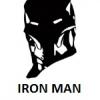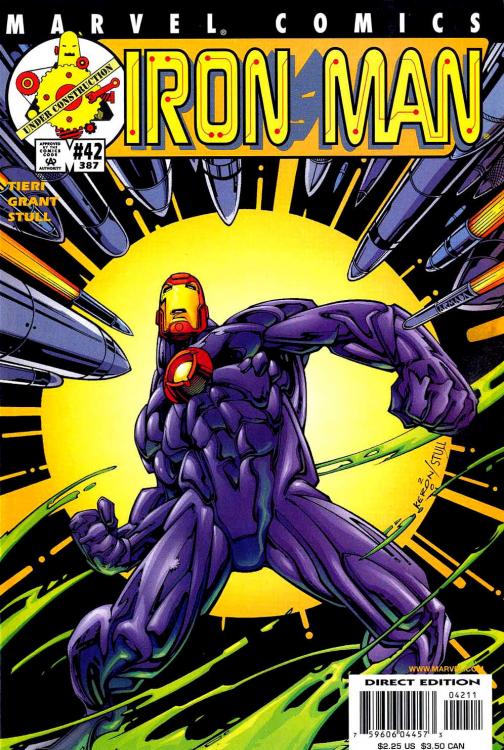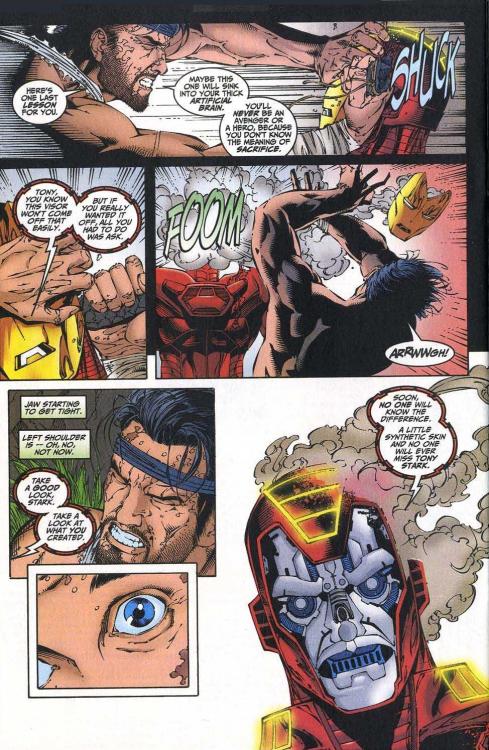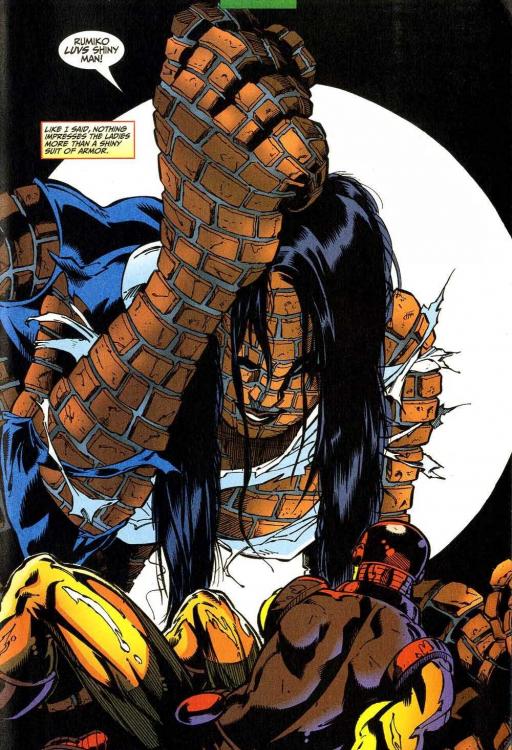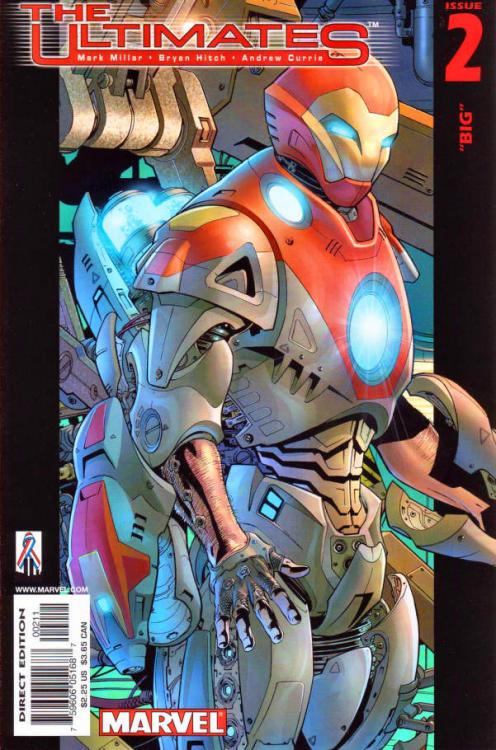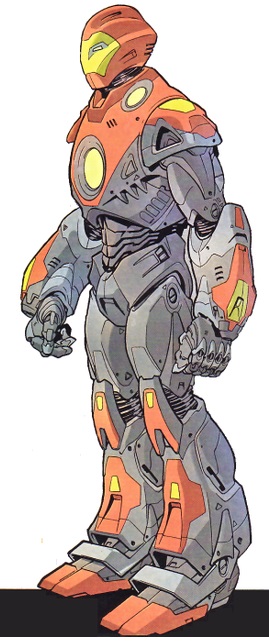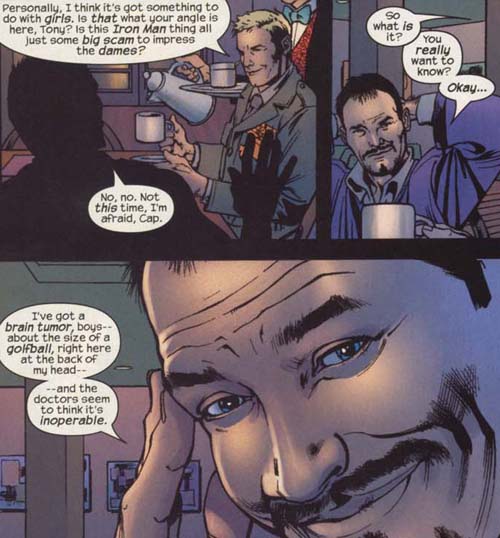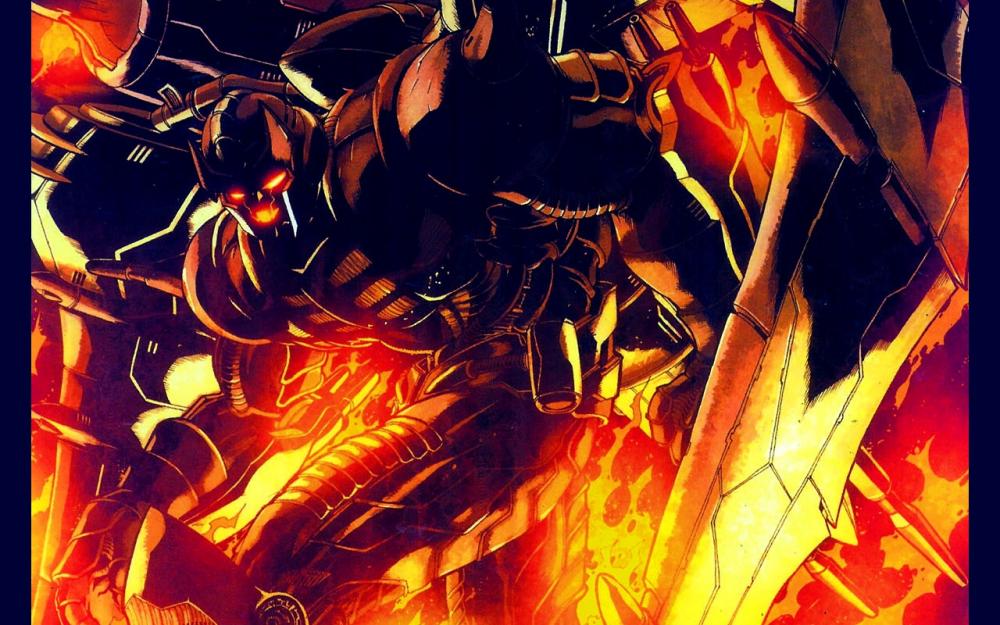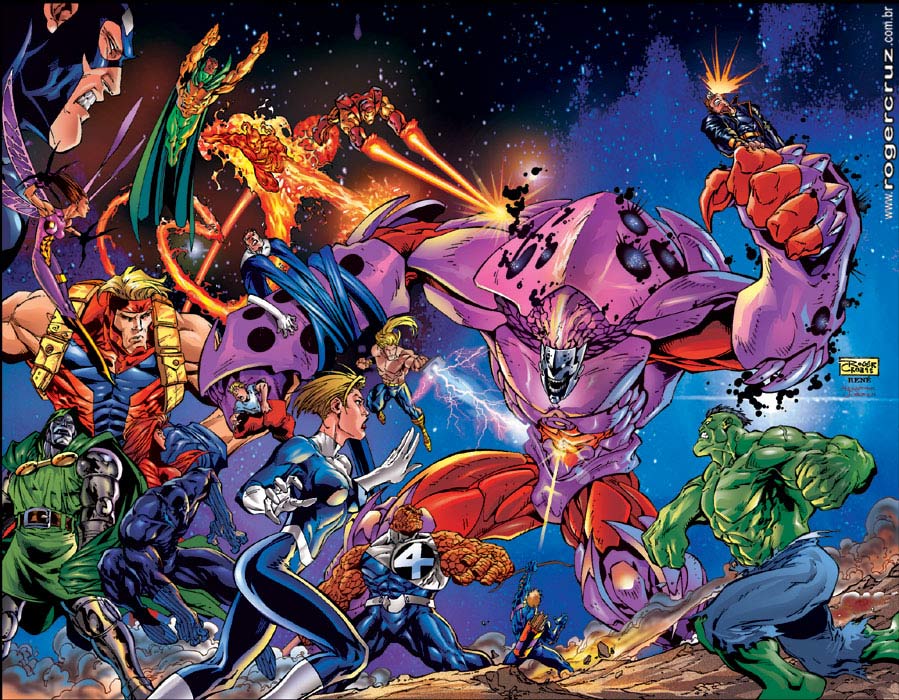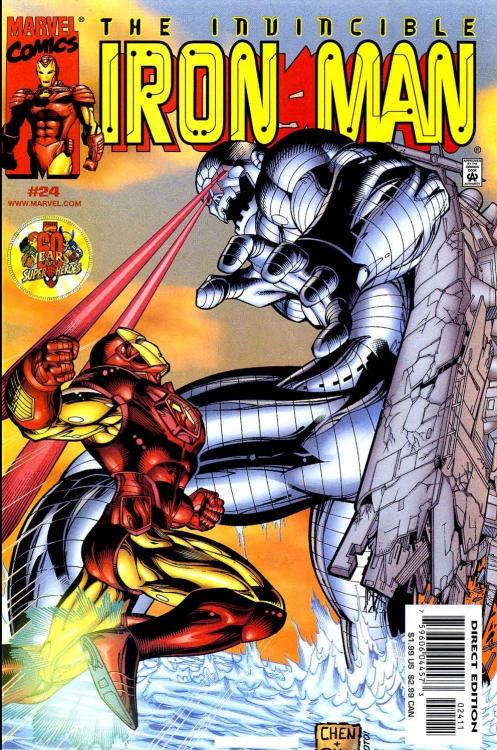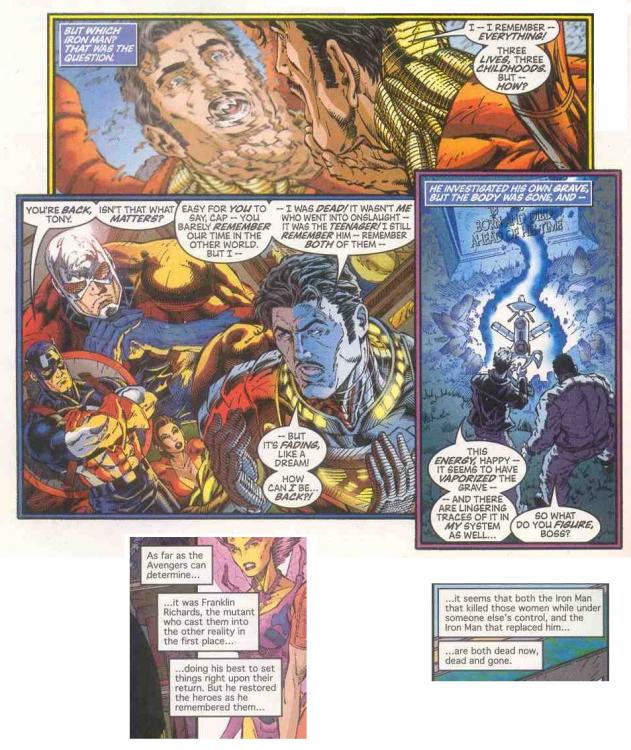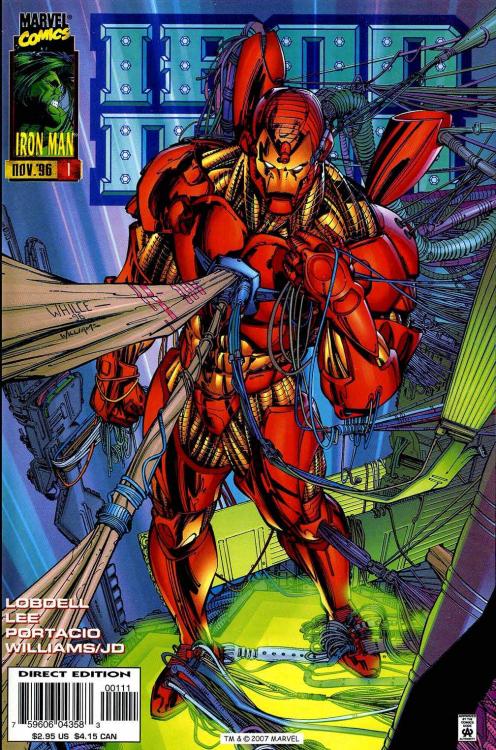-
Posts
1,339 -
Joined
-
Last visited
-
Days Won
163
Content Type
Profiles
Forums
Articles
Everything posted by Salkafar
-
"In fearful day, in raging night, With strong hearts full, our souls ignite, When all seems lost in the War of Light, Look to the stars-- For hope burns bright!" You belong to the Blue Lantern Corps! These peaceful saints wield the blue power of hope. In many ways the strongest of the corps, the Blue Lanterns are the only ones who can save an Orange Lantern or a Red Lantern from their rings. With a full powered Green Lantern nearby, a Blue Lantern becomes unstoppable, since true hope needs Willpower to succeed.
-
He did so many things. 2017 is off to a bad start...
-
"(...)The film was criticized for making light of statutory rape, incest and child neglect. Online review show Half in the Bag called the film "pathetic" and "painful", and went on to criticize Sandler as a comic, including his inability to create real humor that isn't based on childish jokes. Bob Fishbach from the Omaha World-Herald gave the film one out of four stars, saying that it was "worse than Sandler's previous stinker, Jack and Jill." Richard Roeper gave the film an "F" rating, calling it "an ugly, tasteless, deadly and mean-spirited piece of filmmaking", while Alonso Duralde gave the film a scathing review, calling it "vulgar, trite, sexist, misogynist, hacky, tacky, gross, sentimental and stupid, with occasional flourishes of racism and veiled homophobia thrown in to boot." (...)" Having read the synopsis, it seems like a horrible movie to me.
- 1 reply
-
- 1
-

-
Well, that sucks. The ultimate authority in the multiverse is an amoral tyrant?
-
Hold up. The losers in this tournament are getting destroyed? Their entire universe? Whose idea was that? I thought Zeno was a pretty cool dude.
-
Zeno can already destroy universes. That's pretty much the upper limit. I mean, how would you be able to tell he got even more powerful? Sooner or later they're gonna meet the CREATOR of all of these universes, of course.
-
'Writing for the trade' was still a relatively new phenomenon in 2001 - at the very least for Iron Man. In fact the first writer to engage in it was Joe Quesada - 'The Mask in the Iron Man' was the first single-story arc of the type in the book. Frank Tieri, who co-wrote several issues with Joe Q., went with the trend in his relatively short run (three arcs in thirteen issues). In my list of 'bad Iron Man writers', Frank Tieri is usually pretty high up, but upon re-reading these issues I find my opinion softened. It's kind of a clown car in the sense that it's colorful, it doesn't move very well and bits keep falling off, but eh, it's amusing and has some decent parts. Tieri also came up with pretty much my favorite armor iteration, which, alas, lasted for a mere 6 issues. (There was also an issue written by Chuck Dixon, a classic tale about an old Hydra weapon deep in the ocean; just a old-fashioned one-off, to contrast with Tieri's four-to-five issue story arcs, which I mention mainly because Dixon is something of a luminary - not to mention an old-school comics writer. No postmodernism here). The first arc written entirely by Tieri - he is credited along with Quesada on the two last stories of his run - is about an old friend of Tony Stark coming back into his life. Interestingly, Iron Man is one of the heroes whose personal backstory didn't get much attention until quite late. In fact it was only Len Kaminski who shed more light on Tony's relationship with his parents. His story about 'Slag' was a rare reference to Stark's school days, too. So there was certainly room for some revelations there. Unfortunately the structure of the story is told almost entirely in flashback, as it starts with Tony Stark in dire danger in an unclear location, which is only near the end revealed to be in virtual reality. Tony's old 'friend' turns out to be the villain - of course, one would almost say - who has envied him his position ever since they were teens, despite being just as rich and handsome as he was; and now, using his total immersion virtual reality system, he intends to humiliate and destroy him once and for all. He had seduced Rumiko, who felt neglected by Tony, had sent super-powered assassins after him, and now put him through several virtual reality scenarios from Tony's own life, with each tragedy feeling new and freshly painful. In the end, in a direct confrontation, he attempts to crush Tony outright. Tony wins simply by virtue of having more 'will power', which is pretty old-hat; and what doesn't help is that this story came out when 'The Matrix' was still hot. And the artwork was mostly by Alitha Martinez, who - as I mentioned before - has improved immensely since then (She was notably improving even at the time), but back then her style was not my bag. Something else which annoys me: The friend/ enemy's name was Tiberius Stone. Now, the Spider-Man of 2099 has an arch-enemy, Tyler Stone, who was later revealed to be Tiberius Stone's son. And it's still not clear to me whether there are two characters by that name or whether they're supposed to be the same guy. And there's the little niggling things, like Tony developing teleportation technology which is then never brought up again, or characters like the Radioactive Man acting oddly out of character. In any case, Stone - who headed a media empire - took revenge for his defeat by publically disgracing Tony Stark, by releasing every bit of dirt he had on him and presenting it as negatively as possible. Tony, who got sick of this - and of losing Rumiko - decided to shut down his company, take on a new identity and disappear. So Tony Stark vanished, and newly-minted working stiff Hogan Potts took his place; a lowly tech employee at a small but booming company, who looked suspiciously like Clark Kent. What are the odds, but that the company - which was developing revolutionary new meta-material SKIN - was attacked by the Ghost, corporate saboteur extraordinaire, who targeted and destroyed successful companies with fanatical zeal and an array of deadly technology. Iron Man confronted and defeated him, but not before the Ghost had destroyed the company, blowing it up with a bomb, and had revealed he was working for AIM and MODOK. Using the Ghost's powers to defeat MODOK, the Ghost himself was incapacitated when Tony's artificial heart defended itself against his ghostly touch. Tony, giving up his secret identity (yeah, that lasted four issues), then bought the ruined company, saving its research and employees, but losing the affections of the company's director, who he had been wooing and was furious to find out he had been Tony Stark all this time. Art by Keron Grant; it was a little odd, highly stylized. But he designed one of my very favorite armors, so... Returning to corporate life, Tony discovered to his astonishment that the Sons of Yinsen - the secret cult worshiping the man who had once saved his life, venerating the blessings of technology while seeking spiritual enlightenment - had gone very public, led by none other than the Sentient Armor, controlled by Yinsen's resurrected brain! But it was soon revealed that, in fact, none other than the evil super-robot Ultron was behind it all; it turned out that the Sentient Armor had been an immature version of Ultron all along, created subconsciously by Jocasta while she was in contact with the armor. (Jocasta had been created by Ultron a long time ago, and it was revealed a little while before in an Avengers oneshot that all of Ultron's creations - including the Vision - have a program included that compels them to recreate Ultron if he is destroyed. D'oh.) Together with her and Sun Tao, Yinsen's first follower, Tony managed to defeat Ultron's scheme, although the Sons of Yinsen and their mighty floating city were lost (neatly tying up that plot point..). The final issue of Tieri's run was part of " 'Nuff said"-month, a month during which all Marvel comics had no spoken text in them. In retrospect, a goofy concept, based solely on one of Stan Lee's staple sayings. The issue did away with Sun Tao, the final remnant of the whole concept of the Sons of Yinsen, while introducing a new Titanium Man. ..All in all, Tieri's run: like I said, a mixed bag. Quite a few nice ideas, but the timing was all a bit wonky, and the dialogue seemed a little off. Still, not as bad as I remember. Prepare for that to be a refrain on this thread...
-
Against those particular construction vehicles, mere dinosaurs wouldn't stand a chance. Especially if they were to combine.
-
How about black paper instead?
-
Whoa! Can we get confirmation on this?
-
This is awesome.
-
So, Joe Quesada. Joe Quesada is a big name at Marvel - currently their Chief Creative Officer, which means he is their top executive as regards the actual creative process, after being their Editor in Chief for over a decade. He'd worked at Marvel for a while before that, and he had originally started out as an independent artist working for Valiant comics. Valiant was one of the first indie cape comic publishers, created after a bunch of Marvel employees and executives tried to buy the company itself, but were outbid - so they struck out on their own. Quesada had earned his wings, and in 2000 became Editor in Chief of Marvel comics; and one of the first things he did was take over the writing of Iron Man for a while. He wrote five issues, then co-wrote five more with Frank Tieri (but more about him later). The first story, a five-issue story arc named "The Mask in the Iron Man", was a fairly subtle call-back to an Archie Goodwin-penned story from thirty years before. It was actually quite simple: The armor is struck by lightning and comes to life. It becomes obsessed with being 'one' with Tony, demanding he wear it at all times, then grows disenchanted and decides to replace his creator, instead; finally, it sacrifices itself to save Tony's life. Quesada spins a more complex tale, however, involving (to my delight) Rumiko, Tony's most serious love interest ever. Tony finds himself lying to her to protect her from the increasingly deranged armor. At this point it had already killed one of his enemies - Whiplash, whose whip had acted as a lightning rod to send millions of volts through the armor. The final confrontation comes at a deserted island the 'sentient armor' had abducted Tony to; as the two are struggling, Tony suffers his second heart attack in as many weeks. This seems to cause the armor to suddenly have an epiphany and, instead of ending his creator's life, rips out its own mechanical heart and shoves it into Tony's chest to keep him alive. Jocasta, Tony's live-in artificial intelligence, soon diagnoses him to be in perfect health; the cybernetic heart has integrated itself perfectly with his body, completely replacing his old, damaged heart. The heart seems to be pretty enterprising, repairing ribs and involving itself with other organs as well. Unfortunately, it doesn't have its own power source, so Tony finds he has to recharge himself every twenty-four to forty-eight hours, just like wayyyy at the start when he had just become Iron Man - a creative decision which was not entirely uncontroversial among the fans, to put it mildly. The decision to have Iron Man experience the same problem he had at the very start of his superheroic career seems to indicate a pattern with Joe Quesada, who, a few years later, would be the orchestrator of Spider-Man's "One More Day" story. Anyway, after 'Mask in the Iron Man' there followed three issues (two regular, one annual) together with Frank Tieri, about the Sons of Yinsen. Turns out a cult exists which follows the pacifist / technological philosophy of Ho Yinsen, the old professor who sacrificed his life to save Tony Stark all those years ago. It also turned out that Wong Chu, the tyrant who had enslaved them both, was still alive. The Sons of Yinsen have sought out Tony Stark to ask him to join them to confront the now-aged and fat warlord, and they defeat him in the end, and manage to recover their prize: the intact brain of Professor Yinsen. I have to say I don't particularly care for this story, and the artwork - by Alitha Martinez, who has improved massively since then - didn't help very much. The final story with Quesada's participation was a three-parter which nominally followed from that year's company-wide crossover, 'Maximum Security'. Maximus Power - actually an alien, banished from his own world for practicing the forbidden art of science - was trying to earn the funds and resources to return home by pirating super-powers, surreptitiously harvested from super-people, and renting them out to paying customers at rave parties. It was actually quite inspired, and again involved Rumiko hugely, which made me very happy. But hard times were ahead...
-
“My heart has joined the Thousand, for my friend stopped running today.” What a year.
-
Uh-oh. That reminded me of this guy... The Adaptoid was created a long time ago by AIM (the Advanced Idea Mechanics, formerly the science division of terrorist organization HYDRA, who had struck out on their own) specifically to fight superheroes; he had been made with a shard of the Cosmic Cube, an item of unknowable power, which allowed him to take on the appearance and abilities of any life form he encountered. This ability does not appear to have limits, as he proved capable of taking on the powers of even Thor; and by mixing and matching various power sets he could become as powerful as any opponent. He even duplicated the power of Kubik, who himself was a sentient Cosmic Cube, and possesses infinite power - so now he did, too. The Adaptoid has three key weaknesses: a neurotic need to prove himself superior to humanity, an intrinsic inability to understand humans and a lack of imagination. These would not prove drawbacks when facing Archanfel, I think. The Adaptoid seems to be AIMs improved take on the Awesome Android - a more primitive robot with similar powers, created by the Mad Thinker.
-
God, what a year...
-
Saw it. It was good. Darth Vader indeed features in it. The movie did make me ask one thing: Just what is the point of the Death Star, anyway? The Empire has the resources to scour a planet if life, regardless - blast its surface with conventional weaponry, or even simply flood it with troops that seek out every last sapient being on the planet. Or you could blockade a planet - effectively quarantine it, turn it into a huge prison, and destroy, if not all, at least the majority of ships that leave it, creating an untenable situation for the population who do not have the means to retaliate or even resist. Instead, the Empire destroys an entire planet's worth of resources. That's cutting off your nose to spite your face.
-
Hmmm. So wait, is this the sequel to Prometheus or to Aliens?
-
And to all good cheer.
-
The period from the late eighties - say, the days of 'Secret Wars', 'Crisis on Infinite Earths', 'The Dark Knight returns', 'Batman: Year One' and perhaps most seminal of all, 'Watchmen' - onward was called "the Dark Age of comic books" until about the year 2000. The age itself - in retrospect - ended around 1997, long after the tendency in comics to become more realistically violent had degenerated into absurd extremes and self-parody; the final end of this period, to me, was marked by Marvel's "Earth-X". I have already called this time the 'Dork Age' - not only because it was objectively, but because of what has come since, and which I call 'the Dark Age' of comic books and which, I believe, truly started in the year 2000, at the very least at Marvel comics. In the year 2000, two things happened which I view as watermarks - one big, one less so. The lesser one was the introduction of the Sentry to the Marvel universe. The Sentry event comprised a mini-series which told the story of a Superman-like hero who had actually preceded all the other heroes at Marvel Comics, but had been forgotten for some reaso. In the real world, the claim was that this reflected real events, in the sense that the Sentry had been created by Stan Lee before even the Fantastic Four, but it had never panned out and the character had been forgotten (in fact this was a hoax). The atmosphere in the comic was so unique and outlandish and bleak that, although the Sentry was forgotten once more, his return to comics was inevitable. And it was as if something truly dark had entered the Marvel universe. The second, more important thing that happened in 2000 was the creation of the Ultimate Marvel imprint. After a flashy start and a disappointing followup, independent superhero comics had evolved some truly interesting things (involving people like Alan Moore and Warren Ellis and Mark Millar, to name but a few - perhaps not coincidentally all British). Marvel Comics, for its part, was in dire straits. Sales had plummetted to a quarter of what the company had sold at its peak. It was felt that, in order to appeal to a desperately-needed younger audience, perhaps a reboot should be considered. But how? Bill Jemas and Joe Quesada, brainstorming together, decided to simply launch a new line of comics featuring the classic Marvel heroes in a completely new reality - as if the Marvel age had begun in 1999 instead of 1961. They would not replace the originals, but exist parallel to them. The Age of Apocalypse comics in the X-Men franchise and the Heroes Reborn project for the Avengers and the Fantastic Four - which had met with varied responses - could be said to have served as prototypes. But this was total commitment. Total freedom. No previous continuity, only concepts. There were few expectations. At least one writer felt he was working on "the last Marvel comics", which was certainly not impossible. Obviously, that's not how it worked out. 'Ultimate Comics' took off incredibly, starting with Spider-Man and the X-Men, and soon the Fantastic Four... and the title most relevant to this thread, 'Ultimates'. The Ultimates were the Ultimate universe's equivalent of the Avengers, but they did not come together by accident, like before - instead, they were gathered deliberately by SHIELD as a superhuman reaction force to superhuman threats, such as Magneto. Ultimate Iron Man - who received several mini-series of his own, apart from having a prominent role in the 'Ultimates' comic - was quite different from his original counterpart. For one thing, he was likable from the start; an endearing combination of vulnerability, boyish flippancy and matter-of-factly supergenius. He was, like his counterpart originally had, suffering from a severe health issue - except not an injured heart, but an inoperable brain tumor which would inevitably kill him in the end. That was the set-up, anyway. He had created a weapon originally to save his life in a hostage situation, but had only built the Iron Man armor to become a superhero (actually... for an imprint intended to cut away continuity problems, the Ultimate universe had a serious problem with them almost from the start, with Iron Man especially suffering from a lot of conflicting information. I put this down to indie writers not being used to considering other people's writings). Ultimate Marvel was the shot in the arm the company needed. In fact it became so big that at one point, there were rumors that it would replace the original continuity altogether. This never happened, however... and eventually, the Ultimate continuity would meet with similar problems as its predecessor. But, in the early days, particularly 'Ultimates' felt like the future of comics. Incredibly audacious, entirely removed from old-fashioned superhero comics conventions, wide-screen cinematic and considerably more realistic, it rung in a new evolution; superhero comic books that seemingly had grown up, as other, less fantastic genres had already done. The main line comics would have to catch up somehow. Darkness was on the horizon. Big things were coming.
-
How was Zamasu defeated, anyway? Because we're moving into Saitama territory here. From my favorite franchise... This is Thunderwing. In his world the people of Cybertron had been at war for millions of years across the cosmos, but by this time, both sides were exhausted and had withdrawn back to their homeworld. But the scientist Thunderwing had realized that the ecosystem of the planet was collapsing; it could no longer stand the strain of two factions of an unbelievably powerful race of warrior robots locked in endless battle. Realizing catastrophe was inevitable, he proposed the creation of protective exoskeletons, made from living tissue harvested from (likely unwilling) hosts. His proposal was rejected with disgust by Autobots and Decepticons alike, but he forged ahead anyway - alone. Well... in a sense, he was completely successful, managing to create a new body that fitted around his own body, made from donor tissue abraded from living Cybertronians; and his new form was staggeringly, astonishingly powerful. Towering over his fellow Cybertronians, he wielded an array of powers, mainly based on the manipulation of vast amounts of radiant energy, although his physical form was incredibly strong and resistant to damage as well. Unfortunately the process drove him insane. The mad superbeing turned on everything in his path, until Autobots and Decepticons found themselves forced to work together to defeat him. In the end, the Stormbringer was felled as the very crust of the planet collapsed under his feet, burying him under megatons of debris at the bottom of Thunderhead Pass. The conflagration was the final straw; Cybertron was rendered uninhabitable even for its hardy hardy people, who went into exile from the planet of their birth. Centuries later, he was revived by the mad scientist Bludgeon, and steered to the planet Nebulos, which he proceeded to devastate in a few hours of casual effort, as a 'sacrifice' to restore Cybertron. In short, Thunderwing possesses the power to raze a planet, while very little can be done to make him stop. If he wasn't practically mindless, he would be even more dangerous.
-
How about this guy? That should be interesting. Five thousand years ago, in the Middle East, a shepherd boy lost his family in an attack by raiders. Beseeching the gods for help, six of them bestowed their powers on him, transforming him into the Champion, defender of the defenseless, fighting oppressors and injustice. He could change back and forth between his mortal form and his super-powered body, by uttering a word made up of the first letters of the names of his six divine patrons who had given him the strength of Voldar, the wisdom of Lumiun, the speed of Arel, the power of Ribalvei, the courage of Elbiam and the stamina of Marzosh: VLAREM! Many centuries later, he would pass on the power to a modern-day champion, because this is Shazam, the wizard who transformed Billy Batson into Captain Marvel! But he is the original. As the Champion, he possesses vast strength, speed and endurance, on a par with Superman, great intelligence and stores of knowledge, as well as magic ability and a resistance against mental attacks. *** I wonder how Archanfel would respond to this? But he is not human. He doesn't have the mental capacity to put someone on his own level, I think.
-
Hmmm... if we're talking about exceptionally powerful psychic types: what about this guy? I've talked about him before in this board. He was the product of Magneto's evil infecting Professor Xavier and possessed both their power sets: immensely powerful telepathy and control over magnetism. A little while later he captured Nate Grey and Franklin Richards, two mutants with immense psychic abilities and the power to alter reality, and took their powers for his own. He took on all the heroes shown above, plus the X-Men, and was defeating them all until a bunch of them sacrificed themselves to contain his life force and destroy him. His powers, at their peak, were enough to make a second sun appear in the sky. He's not a very complicated character - after all, he's not a person, but more of a sentient psychic tumor, consisting only of hate. At first he wanted to destroy all the humans so that mutants would inherit the Earth, but when he read Nate Grey's mind, he discovered that in the alternate timeline he came from that had already happened, and the world had been destroyed anyway. So he decided he would simply kill everybody in the world. I really wonder what an all-out battle between him and Archanfel would be like.
-
After rebirth, return. As Iron Man came back from a year-long sojourn in the imaginary universe Franklin Richards had created, he was given over into the care of Kurt Busiek. This is where I came in. Not to say I wasn't a fan of Iron Man before, or that I didn't read his comics (in the shop, mostly), and I had bought comics before (My first was #325, if memory serves - either that or the Iron Manual, which is technically speaking not a comic), but I started to follow the series structurally from around #10 of volume 3. And never stopped. (Well, I stopped once, but that's a story for another day...) A lot of that is on Busiek, I think. Thing is, he's passionate, he's sincere, he loves superheroes, he loves superhero comics and he cares about continuity. Those are rare qualities in a writer these days. He's written a lot, he's written a lot for both Marvel and DC, he created 'Astro City', created the Thunderbolts... he wrote 'Avengers Forever' and 'Marvels', for pete's sakes.. So, he rebuilt Iron Man, and he did it with care and attention, making clear immediately that this was the same Tony Stark who had had all those adventures we had enjoyed over the years - the man who had died at the end of the Crossing, brought back to life by the power of Franklin Richards. It's pretty much Busiek saying "Those stories sucked and they never should have happened, so we will continue as if they never had", which was, and is, the prevailing sentiment among Iron Fans. He simply got on with storytelling; he reinstated Pepper Potts as Tony's secretary and Happy Hogan as his PR man; while introducing a new love interest: Rumiko Fujikawa. When Tony Stark had died the second time, his company had been bought by Japanese Zaibatsu Fujikawa; he ran into the female heiress of the business empire quite by accident and they hit it off amidst a deadly crisis at the hands of a new Firebrand. Rumiko would remain a mainstay in the comic for years. Old villains kept turning up, such as Spymaster and his espionage elite - working this time for the Mandarin, who had once again returned for revenge, this time at the controls of a mile-long, dragon-shaped sky fortress. Having barely survived this gauntlet, Tony Stark discovered his armor was killing him - the power output, which had slowly increased over the years, was affecting his health. It was likened to 'Not living near power lines, but inside of them'. Redesigning the armor solved the problem, but would lead to new ones down the line. Meanwhile, the enemies kept coming - the murderous Nitro, Fin Fang Foom returned from dimensional exile, the immensely powerful Count Nefaria and a new, villainous War Machine, made more deadly than ever by command of Sunset Baine. That conflict led to gaining a new ally in the form of Jocasta, a former Avenger - a female robot, created out of love by the evil robot Ultron - who uploaded her consciousness into Tony Stark's computers. And he needed all the help he could get, because he was about to get dragged into 'The Eighth Day', an Avengers crossover which was clearly meant as an homage to Jack Kirby. Eight baroque villains, avatars of eight evil gods, were conspiring to enslave all of humanity and have all humans fight amongst each other until just one of them remained victorious. Finally getting some time to breathe,Tony was delighted to receive a call from Rumiko, who had been given a post in her father's company, to join her aboard a research vessel. Tony was glad to see her, even if she was accompanied by Morgan, his ne'er-do-well cousin who had been hired by Stark-Fujikawa. He was less thrilled to find out the research vessel had been built atop Ultimo, the giant robot (Very much like the Iron Giant - except he keeps trying to kill everyone) and was tapping his vast energy stores. Everything, nevertheless, seemed under control.. until the vessel was attacked by Goldenblade and Sapper, two armored marauders who were constantly on the prowl for energy that Sapper could drain. But as the tentacled alien recognized Ultimo, he panicked... and apparently him draining the ship's energy caused the giant robot to awaken, because he tore loose from the ship and started to walk towards Sapper and Goldenblade's space ship. Unfortunately the city of Spokane lay on his path; and before he could reach it, Iron Man and his brand new allies Goldenblade and Sapper, together with Miss Marvel, had to stop the towering death machine. Busiek himself apparently does not think it was his best work. That is actually probably true, but it was still a very solid run on Iron Man, lasting just over two years. It's a personal favorite of mine because a) it's crisp b) it's fun c) it features Iron Man being a hero and d) it's the one I got started on, really. It was also the last classical Iron Man run - the last one before the Dark Age, which is the age before the one we live in now. Everything after this point was post-modern. It happened around the year 2000. Very poetic.
-
If only we knew what, if anything, is going on.
-
'Heroes Reborn' was an experiment. About five years before, several artists had left Marvel to start their own company, Image Comics, which started a whole wave of indies setting up in the shadow of the two old giants. In retrospect, not all that came out of that was good... but in 1996, it was all still going very well. Marvel, not so much. So Bob Harras hired Jim Lee (no relation) and Rob Liefeld, two of the most successful indie writers, who both had worked for Marvel years before, to create this alternate universe for some of the core characters of his company. Two of Marvel's in-house writers, Scott Lobdell and Jeph Loeb, would share the writing assignment. The story, as mentioned before, was that the heroes (and Doctor Doom) had sacrificed themselves to destroy the evil Onslaught, but, unknown to everybody, had been saved by the reality-warping power of Franklin Richards. That's more impressive if you know Franklin Richards is the about 8-year-old kid of Reed and Sue Richards and he did it without even realizing it. Anyway. There was a new pocket universe, and it consisted of four series: Fantastic Four, Avengers, Captain America and, most important to us, Iron Man. Fortunately for us, the writing job on 'Iron Man' was given to Lee and Lobdell, with Loeb doing a few issues towards the end of the run. ...'End of the run' makes it sound more impressive than it actually is: the second volume of 'Iron Man' - and the other three titles - is just twelve regular issues plus one bonus issue written by Jim Robinson. The last two issues of all titles were four-part crossovers. It was a small world, this 'Heroes Reborn' universe; there were no mutants at all, and of course precious little time and space to develop the legion of characters Marvel had in its stable even back then. There was no prior continuity, because the heroes had no memory of their other lives - as far as they were concerned, they had always lived there. In other words, a lot like it was way back in 1963. Where 'Fantastic Four' was basically the classic stories of the team re-written (and, emphatically, drawn) in a contemporary style, the other series' were a little more loose with the concept. With 'Iron Man', for instance, the origin of the hero was tied in tightly with the origin of this universe's Hulk. It was like the original stories in that the Tony Stark of this world, at least when we first meet him, is a colossal jerk - not according to a point of view, like in 1963, but objectively. He's a cynical corporate raider who treats everyone around him like disposable toys, and has lost the desire to create years before. But when he gets word that something strange is happening at a supposedly-abandoned Stark facility out in the desert, he flies out to find out what it is... and his helicopter is promptly shot down. Or, rather, it crashes after the Hulk throws a rock at it. Although Stark does not know this, SHIELD (which is a much more pervasive force in this world) had stored the Gamma bomb, created by Bruce Banner, on this site. Banner, tormented by what he had sent out into the world, had made an agreement with a secret organization to dismantle it. Unfortunately the organization turned out to be HYDRA, and they trapped him inside the device as it was counting down; and if it went off, it would wipe out half the Eastern Seaboard. Banner managed to cause the bomb to drop down a thirteen-mile shaft, but with him still inside. Minutes later and miles away, a very confused and enraged Hulk crawled out of a tunnel it had dug to the surface, to look right into the blinding lights of a helicopter. He lashed out furiously. Wounded and dying, Stark drags himself to the laboratory, which, years before, had been the site of the failure which - it is suggested - turned him into the husk of a man he is today: the testing of the prototype Iron Man armor, which cost the life of his life-long best friend, 'Rebel' O'Reilly. Now, the failed prototype - which is weapons system and life support in one - must serve to save his life, and to defeat the Hulk. The battle ends with both fighters falling into a river; Stark nearly dies, but manages to reach the home of Pepper Potts - whom he had fired a few hours earlier because she called him out on his BS - who saves his life by hooking his failing armor up to a car battery. She becomes his only confidante. Over the months that follow, Tony Stark - who feels as if he is, ha ha, reborn - begins to turn his life around, creating instead of breaking down again, and attempting to make amends for the damage he did to many people's lives. One such person is Arthur Parks, whose company was taken over by Stark and then broken down; he uses his own technology to turn himself into a living laser to take revenge. Meanwhile, HYDRA is still targeting Tony Stark, sending the deadly Whirlwind to assassinate him - but the crafty Stark manages to use his power against him. Stark is still reeling in the aftermath of the destruction of Avengers Island by a runaway reactor core when he is attacked by what seems to be a ghost - Rebel O'Reilly! O'Reilly, back from the dead, is defeated by Stark, who realizes he had been resurrected and sent to kill him by HYDRA. O'Reilly wants to redeem himself, and swears revenge. But as the two armored figures confront the scheming Lady Hydra, she is quickly slain by her master, the Mandarin, who had repeatedly instruced her not to attack Stark. The Mandarin himself is defeated by Rebel and Iron Man, but O'Reilly perishes, for good this time, in the battle. Finally it is revealed the Mandarin himself is an android - created by the true manipulator, none other than Doctor Doom! Actually this shouldn't be too much of a surprise, as there are only a few really big supervillains in this universe, and Doom is the only one who is from the original timeline; plus he is a traditional adversary of Iron Man, due to the whole armored genius versus armored genius thing. Iron Man and Doom struggle, and in the process activate Doom's time machine - as before, the two adversaries are dragged down the timestream, seeing several key moments in history, only not the history they know, but the history of the original universe. They return to the present moments before Iron Man's armor runs out of power, but Doom lets him go, stirred into worried thoughts by what he saw on their journey. And he is justified, as in the last regular storyline in this universe, Galactus comes to Earth and Doom has to travel back in time several times to ensure an outcome which does not involve the planet being destroyed. Anyway. As time progresses, Reed Richards has come to realize there is something strange about their universe. Samples of the planet, analyzed outside its sphere of influence, indicate their world is about a year old. Susan Richards has intense and worrying dreams about a son, although she can't have children. And the old reactor of Avengers Island turns out to be a tear in reality in disguise. It all comes to a head when the Celestials - yeah, remember them? - come to Earth for judgment. Turns out all of this - and by that I mean the entire history of Earth up until this point - was done to produce a being that operated on their level, and that's Franklin Richards. Him creating an alternate world was the trigger for them to pass final judgment on mankind and Earth. Now, one of the Earths has to be erased. In the end, the heroes and Franklin manage to convince the Celestials to spare both worlds, on the provision that the heroes originally from the 'real' Earth return there; as they push through the boundary between worlds, their full memories are restored, neatly sewing this whole thing up. Heroes Reborn was a commercial success, but then, it only lasted one year; and sales were still going down about halfway (Liefeld was apparently dismissed for this reason, but who even knows with him. Odd, though, because I found his Captain America to be pretty interesting). Of course this was during the comic books equivalent of the Great Depression after a bubble economy we can today only shake our heads at. What can you say, it was the Dork Age. The art reflected this to an almost iconic extent. But I like it, at least as a representation of this age; legs went on forever, feet were tiny, necks were impossibly thick and facial characteristics seemed to vary with wild abandon. And the text balloons... so many text balloons. I called 'Heroes Reborn' an experiment, but perhaps 'prototype' is a better word. But back then, of course, nobody yet foresaw what I personally call 'the Dark Age'. More about that later. After the heroes were reborn, the heroes returned.


